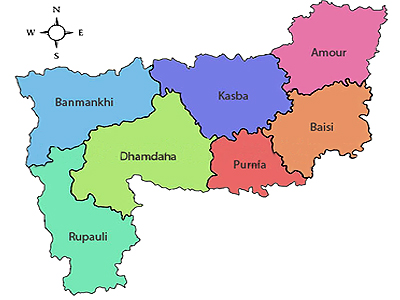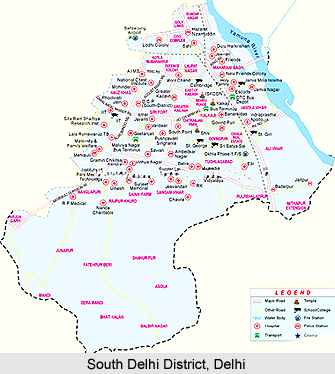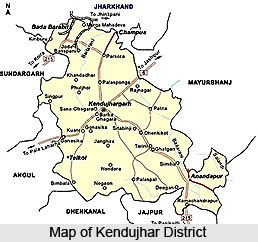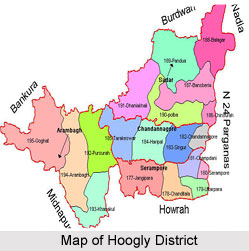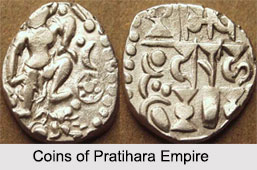 Coins of Pratihara Empire or Gurjara-Pratihara dynasty display several stages of evolution and reveal that they were issued over a long period, possibly 50 to 100 years. Inscriptional evidences support the existence of a well-regulated currency during the Pratihara rule. The coins of Pratihara Empire enjoyed extraordinary longevity in circulation. This longevity made them an important currency of the succeeding Rajput period.
Coins of Pratihara Empire or Gurjara-Pratihara dynasty display several stages of evolution and reveal that they were issued over a long period, possibly 50 to 100 years. Inscriptional evidences support the existence of a well-regulated currency during the Pratihara rule. The coins of Pratihara Empire enjoyed extraordinary longevity in circulation. This longevity made them an important currency of the succeeding Rajput period.
Gurjara Currency
The Gurjara government had a stable currency system dependent on the agricultural revenue system and the military department, matched by the concurrent needs of both local and export traders for a medium of exchange. The monetary system was rational and there was a standard coinage metrology during the life of the kingdom. However, there is no practical way of estimating the absolute volume of money in the Gurjara dominions. Still, by comparing the rates of recapture in modern Uttar Pradesh versus those of earlier and later periods, a sense of scale for the relative volume of money can be achieved. The survival rate for coins belonging to AD 600-1000 period is appropriate for the lapsed time. Hence, it is concluded that the volume of exchange transactions during this era was comparable to that of other periods in north Indian history, and probably higher than that of the Gupta era.
Further, historians also opine that the number of coins lost is directly proportional to the volume of coinage in circulation. The ratio of surviving coins to period of issue is a second measure of the degree of monetization, that is, the amount of money used over time. Other archaeological facts establish that coinage in circulation in north India during AD 600-1000 was comparable to that of the Kushana Empire and Mughal Dynasty. Further, the coinage circulation during Pratihara Empire was clearly superior to that of the preceding Gupta and succeeding Rajput periods. It can also be stated that there was no shortage of currency in the Gurjara-Pratihara Empire of the late eighth to the late tenth century AD.
Decline in Gurjara Currency
The Gurjara currency underwent a long-term decline in intrinsic value because of a steady increase in the base metal alloyed with its constituent precious metal. It has also been established by historians that the coins passed as a denomination by convention during Pratihara rule, as in a fiduciary coinage, under a government with sufficient power and prestige to regulate the value of money by fiat.
Distribution of Coins of Pratihara Empire
The distribution of the successive Gurjara drammas shows that these coins did not circulate in the regions of Kathiawad-Malwa of southern Rajasthan. Much of this region was administered by feudatory dynasties acknowledging Gurjara-Pratihara supremacy. The variety of Indo-Sassanian style drammas, which were found in the regions were different from the major currency of the Ganga basin. In Marwar, the coins were broad, thin and generally closer in fabric to the Hun prototypes. The coins on average contained 0.65 g of silver, an amount somewhat lower than the Vinayakapala Dramma. Although the Gurjaras controlled the seaports of Gujarat, their dramma coinage from the Gangetic plains did not circulate in this area where a high-value feudatory coinage was well established, and where foreign currencies were encountered. Further, Gurjara coinage was not a unified fiduciary coinage.
In Gujarat, the feudatory silver coinage was also based on the Indo-Sassanian prototype, although the coins were not as wide and thin as the Marwar coins. In this period, their minimum precious metal content was 3.27 g, which was considerably in excess of the value of coins of Marwar or the Ganga basin. Their stable silver content encouraged their use far beyond coastal Gujarat. This coinage survived the passing of the issuing dynasty, as indeed the passing of the imperial money-forms of the Pratiharas.


